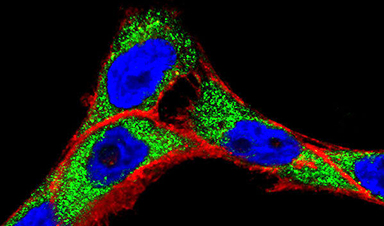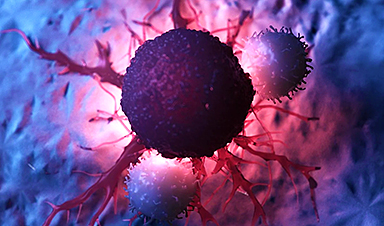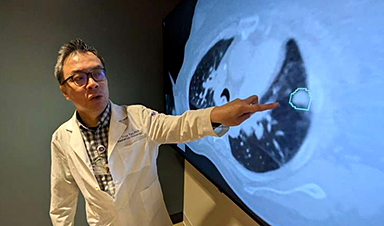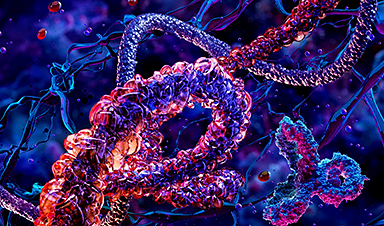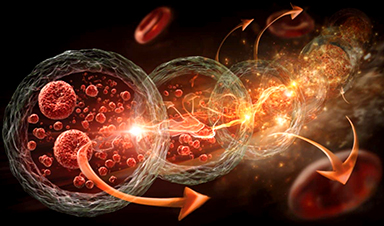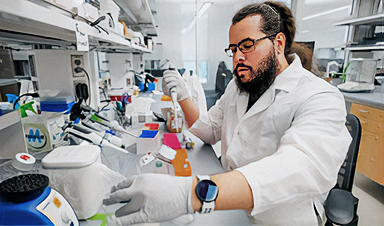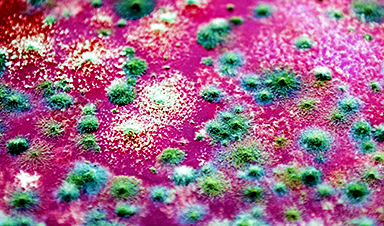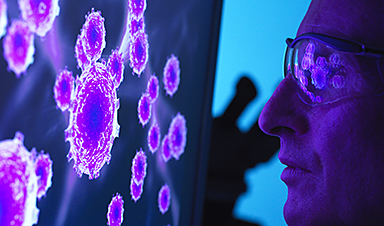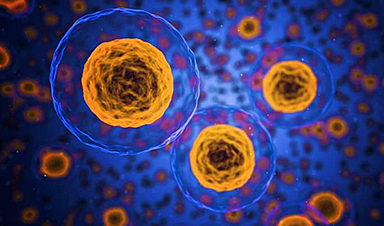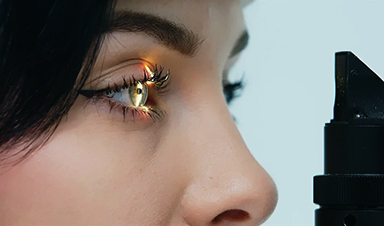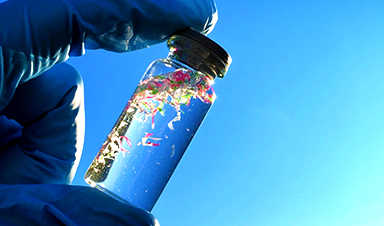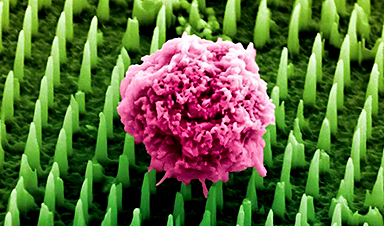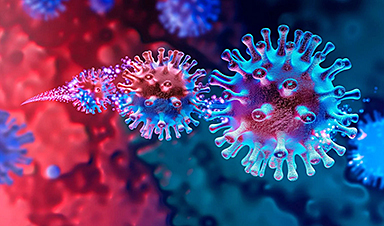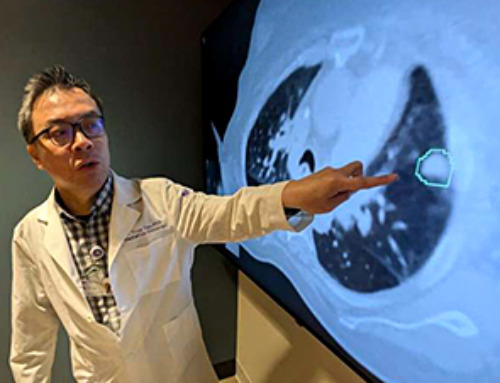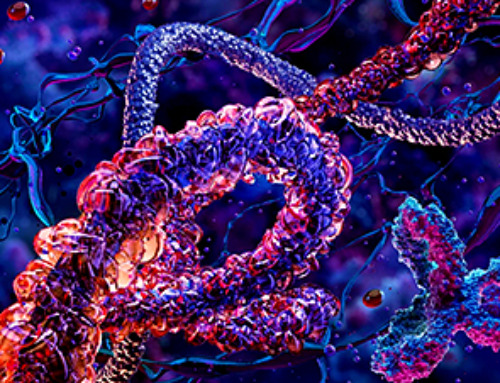Treating cancer and other diseases with laser light is not currently considered routine in the clinical setting, but new approaches using nanoparticles show some promise in improving existing techniques.
In Applied Physics Reviews, a multinational team of researchers reviews the current status of the field of nanoparticle-enhanced PDT and PTT and focuses on combining the two techniques to achieve the highest level of treatment efficiency.
By combining PTT or PDT with nanomaterials, investigators have been able to apply these types of phototherapies while also delivering drugs to sites in the body that are otherwise inaccessible. It is also possible to combine PTT and PDT into a single treatment, creating an even more powerful treatment method.
The surface of the nanoparticle can be modified to attach a photosensitive molecule to the surface. This allows the absorption of light at a particular wavelength. In the PTT method, this light is converted to heat. In PDT, the light creates ROS. For PDT to be successful, sufficient ambient oxygen must be present to produce enough ROS to kill tumor cells.
“In cancer therapies using this strategy, the penetration depth of laser light into the tissues is critical in determining the therapeutic efficiency,” said author Masoud Mozafari, from the Iran University of Medical Sciences.
Factors that control the penetration depth include the shape of the beam, wavelength of the light, intensity of the laser, and the radius of the beam.
A powerful approach is to combine PDT with traditional medical treatments, such as chemotherapy, to create photodynamic antibacterial chemotherapy.
The nanoparticles can be used to deliver chemotherapeutic agents or antibiotics to the tumor site. When light is applied, generating ROS molecules in the tumor and killing both tumor cells and bacteria, the antibiotics can be released to prevent infection in the treated area.
Other modifications to the nanoparticle surface could allow it to cross the blood-brain barrier so that brain tumors can be treated.
One set of studies reviewed in this work involved gold nanorods that had a glycoprotein from the rabies virus attached to their surface. Since this virus naturally infects the brain, the gold nanorods were able to penetrate the blood-brain barrier and target the brain tumor. Applying light from a laser then allowed the nanorods to generate localized heat, killing the tumor cells.
These techniques can also be used to treat other medical issues, such as atherosclerosis, scar removal, abscesses, nonhealing ulcers, or dental infections.
News
Scientists discover cancer-fighting bacteria that ‘soak up’ forever chemicals in the body
A family of healthy bacteria may help 'soak up' toxic forever chemicals in the body, warding off their cancerous effects. Forever chemicals, also known as PFAS (per- and polyfluoroalkyl substances), are toxic chemicals that [...]
Johns Hopkins Researchers Uncover a New Way To Kill Cancer Cells
A new study reveals that blocking ribosomal RNA production rewires cancer cell behavior and could help treat genetically unstable tumors. Researchers at the Johns Hopkins Kimmel Cancer Center and the Department of Radiation Oncology and Molecular [...]
AI matches doctors in mapping lung tumors for radiation therapy
In radiation therapy, precision can save lives. Oncologists must carefully map the size and location of a tumor before delivering high-dose radiation to destroy cancer cells while sparing healthy tissue. But this process, called [...]
Scientists Finally “See” Key Protein That Controls Inflammation
Researchers used advanced microscopy to uncover important protein structures. For the first time, two important protein structures in the human body are being visualized, thanks in part to cutting-edge technology at the University of [...]
AI tool detects 9 types of dementia from a single brain scan
Mayo Clinic researchers have developed a new artificial intelligence (AI) tool that helps clinicians identify brain activity patterns linked to nine types of dementia, including Alzheimer's disease, using a single, widely available scan—a transformative [...]
Is plastic packaging putting more than just food on your plate?
New research reveals that common food packaging and utensils can shed microscopic plastics into our food, prompting urgent calls for stricter testing and updated regulations to protect public health. Beyond microplastics: The analysis intentionally [...]
Aging Spreads Through the Bloodstream
Summary: New research reveals that aging isn’t just a local cellular process—it can spread throughout the body via the bloodstream. A redox-sensitive protein called ReHMGB1, secreted by senescent cells, was found to trigger aging features [...]
AI and nanomedicine find rare biomarkers for prostrate cancer and atherosclerosis
Imagine a stadium packed with 75,000 fans, all wearing green and white jerseys—except one person in a solid green shirt. Finding that person would be tough. That's how hard it is for scientists to [...]
Are Pesticides Breeding the Next Pandemic? Experts Warn of Fungal Superbugs
Fungicides used in agriculture have been linked to an increase in resistance to antifungal drugs in both humans and animals. Fungal infections are on the rise, and two UC Davis infectious disease experts, Dr. George Thompson [...]
Scientists Crack the 500-Million-Year-Old Code That Controls Your Immune System
A collaborative team from Penn Medicine and Penn Engineering has uncovered the mathematical principles behind a 500-million-year-old protein network that determines whether foreign materials are recognized as friend or foe. How does your body [...]
Team discovers how tiny parts of cells stay organized, new insights for blocking cancer growth
A team of international researchers led by scientists at City of Hope provides the most thorough account yet of an elusive target for cancer treatment. Published in Science Advances, the study suggests a complex signaling [...]
Nanomaterials in Ophthalmology: A Review
Eye diseases are becoming more common. In 2020, over 250 million people had mild vision problems, and 295 million experienced moderate to severe ocular conditions. In response, researchers are turning to nanotechnology and nanomaterials—tools that are transforming [...]
Natural Plant Extract Removes up to 90% of Microplastics From Water
Researchers found that natural polymers derived from okra and fenugreek are highly effective at removing microplastics from water. The same sticky substances that make okra slimy and give fenugreek its gel-like texture could help [...]
Instant coffee may damage your eyes, genetic study finds
A new genetic study shows that just one extra cup of instant coffee a day could significantly increase your risk of developing dry AMD, shedding fresh light on how our daily beverage choices may [...]
Nanoneedle patch offers painless alternative to traditional cancer biopsies
A patch containing tens of millions of microscopic nanoneedles could soon replace traditional biopsies, scientists have found. The patch offers a painless and less invasive alternative for millions of patients worldwide who undergo biopsies [...]
Small antibodies provide broad protection against SARS coronaviruses
Scientists have discovered a unique class of small antibodies that are strongly protective against a wide range of SARS coronaviruses, including SARS-CoV-1 and numerous early and recent SARS-CoV-2 variants. The unique antibodies target an [...]
